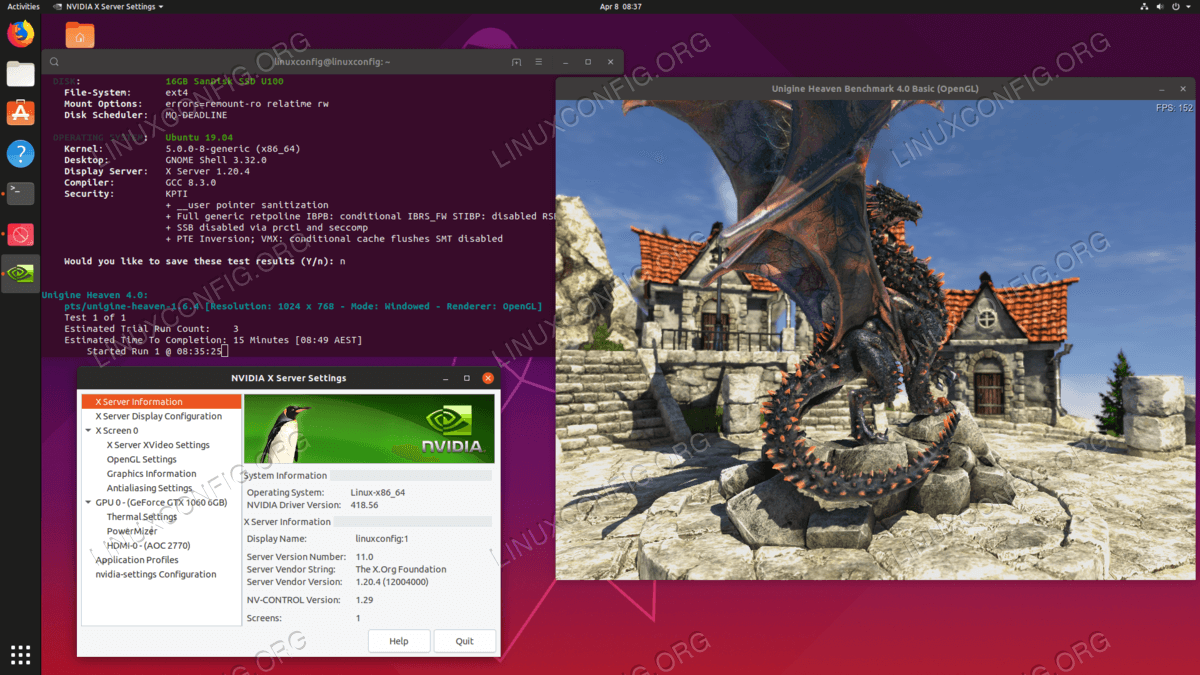

Virtual machines, of course, have virtual graphics cards. From that point, you can scroll or page forward to see how many graphics cards lspci found.įor this article, we conducted our research on a variety of Linux distributions running in VirtualBox virtual machines. Less searches for the string, “VGA,” and it shows you the first matches it finds. If you press the forward-slash ( /), you activate the less search function. We type our command as follows: sudo lspci -v | less We’ll use sudo to ensure the information is as detailed as possible. The -v (verbose) option tells lscpi to give us as much information as it can. There’ll be a lot of output, so we’ll pipe it into less. The latest database version is retrieved for us, and we can now use the lspci command. Type the update-pciids command to do just that: sudo update-pciids
#Check video driver linux update
It checks a local copy of the PCI database to identify the PCI devices it detects. Before we start, it’s wise to update the local copy of the PCI database. Wouldn’t it be great if we could tie the PCI database and the lspci command together? Well, actually, that’s exactly what happens when you run the lspci command. You can use the lspci command to list the PCI devices installed on a Linux computer, as well as some information about them.

This means if you know some information about the device, you can look it up. The PCI ID Repository maintains a database of all known IDs for PCI devices. The Peripheral Component Interconnect (PCI) standard is a common protocol you can use to talk to internal peripherals, such as graphics cards.


It doesn’t matter! You can solve this conundrum either from the command line or through the graphical user interface (GUI).
#Check video driver linux drivers
Let’s assume the worst-case scenario and say the drivers for the graphics card were never installed, so you can’t even look at those to get a clue. So how do you identify the graphics card in a Linux computer? To support something, you need to know what it is. The deer-in-headlights expression you receive in response speaks volumes. Hey, this might not be so bad after all! But then your short-lived flicker of hope is snuffed when you ask, “What kind of graphics card do you have?” Still, you pitch in! You quickly determine the issue is likely a display driver issue. You’re drafted to provide support for a nontechie relative or work colleague, and something tells you this isn’t going to be painless. This page includes information on open source drivers, and driver disks for older Linux distributions including 32-bit and 64-bit versions of Linux.You’ve probably been there. Open source drivers for NVIDIA nForce hardware are included in the standard Linux kernel and leading Linux distributions. Latest Legacy GPU version (304.xx series): 304.137 Latest Legacy GPU version (340.xx series): 340.108 Latest Legacy GPU version (390.xx series): 390.147 Latest New Feature Branch Version: 495.46


 0 kommentar(er)
0 kommentar(er)
